Part 3
People with hearing loss can sometimes be helped by technology. The two most common devices used by people with hearing loss are hearing aids and cochlear implants.
A hearing aid uses a small microphone to collect sound, which is then amplified as an electrical signal that is reconverted to sound using a small loudspeaker.
A cochlear implant uses a small microphone to collect sound, which is then electronically processed into a form that the brain can interpret. The information is then transmitted through a collection of electrodes.
Identify which statements refer to a hearing aid, which refer to a cochlear implant, or both.
a. It works as a transducer, converting vibrational energy to electrical (electrochemical and electromechanical) energy. __________
b. It helps people whose hearing loss is caused by problems in the outer or middle ear.
__________
c. It increases the vibrational energy entering the ear. __________
d. It helps sounds bypass injured or absent hair cells. __________
e. It helps people whose hearing loss is caused by problems in the inner ear.
__________
f. It can help profoundly deaf people communicate using sound. __________
Master 4.5b
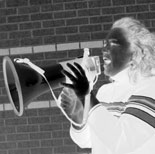
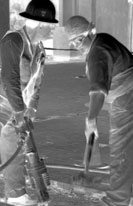
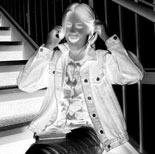
Lesson 5
Elaborate/
Evaluate
Too Loud,
oo Loud,
Too Close,
oo Close,
Too Long
Figure 5.1. Sounds can be too loud, too close, and too long.
Overview
At a Glance
Students begin with an analysis of loudness. They estimate the loudness of common environmental sounds, and then use their knowledge of hearing and loudness to evaluate the risk of noise-induced hearing loss for fictitious individuals. The module concludes with students evaluating their own sound exposure and providing “sound advice” to minimize their risk of noise-induced hearing loss.
Major Concepts
Noise-induced hearing loss leads to an inability to hear and understand speech and other sounds at normal loudness levels. Noise-induced hearing loss can be temporary or permanent. Noise-induced hearing loss can result from a one-time exposure to an extremely loud sound, repeated or long-term exposure to loud sound, or extended exposure to moderate sound.
Noise-induced hearing loss can happen to people of all ages. The best way to protect one’s hearing is to avoid loud noise whenever possible.
113
How Your Brain Understands What Your Ear Hears
Objectives
After completing this lesson, students will
• be able to define noise-induced hearing loss as a diminished ability to hear and understand speech and other sounds at normal loudness levels resulting from exposure to loud noise;
• understand that noise-induced hearing loss can be temporary or permanent;
• recognize that people are vulnerable to noise-induced hearing loss if they are exposed to noise that is too loud, if they are too close to the source of noise, or if they are exposed to noise for an extended period of time;
• understand that noise-induced hearing loss can happen to people of all ages; and
• appreciate that noise-induced hearing loss is preventable and that the best way to protect one’s hearing is to avoid loud noise whenever possible.
Teacher Background
Consult the following sections in Information about Hearing, Communication, and Understanding:
4 Hearing Loss (page 38)
4.1 Noise exposure (pages 38–39)
4.2 Aging (page 39)
4.3 Ototoxic drugs (page 39)
4.4 Disease and infections (pages 39–40)
4.5 Heredity (page 40)
4.6 Cochlear implants (pages 40–41)
5 Prevention of Noise-Induced Hearing Loss (pages 41–42) In Advance
Web-Based Activities
Activity
Web Version?
1
No
2
No
3
No
114
Photocopies
Activity 1
Master 5.1, Electron Micrographs of Hair Cells (Make 1 copy per student.)
Master 5.2 , Loud, Louder, and Loudest (Make 1 copy per student.)
Master 5.3, Answer Key to Loud, Louder, and Loudest (Make an overhead transparency.)
Master 5.4, Dangerous Sound Levels (Make an overhead transparency.)
Activity 2
Master 5.5, Some Everyday Sounds (Make 1 copy per student.)
Master 5.6, Sound Diary Summary—Joe, the Guitarist
(Make 1 copy per team.)
Master 5.7, Sound Diary Summary—Maria, the Woodworker (Make 1 copy per team.)
Master 5.8, Sound Diary Summary—Michael, the Land-
scaper (Make 1 copy per team.)
Master 5.9, Sound Diary Summary—George, the Firefighter (Make 1 copy per team.)
Master 5.10, Hearing-Risk Evaluation Form (Make 1 copy per student.)
Master 5.11, Ten Ways to Recognize Hearing Loss (Optional: Make 1 copy per student.)
Activity 3
No photocopies needed.
Materials
Activity 1
no materials needed (except photocopies)
Activity 2
no materials needed (except photocopies)
Activity 3
no materials needed
Preparation
No preparations needed (except photocopying).
115
Student Lesson 5

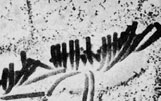
How Your Brain Understands What Your Ear Hears
Procedure
Teacher note
The sound levels at which hearing damage occurs (often reported by different sources as 80 dB or 85 dB) is not precise for every individual. We know that prolonged exposure (that is, over many years) to sounds over 85 dB, especially in work settings, does cause damage. Because some sources do cite exposures at 80 dB and lower, it is important for students to think about these numbers as a frame of reference for prevention awareness.
They absolutely need to understand the permanent and irreversible damage caused by such things as exploding firecrackers, guns, and jackhammers.
Activity 1: It’s Too Loud!
1. Review with the class the components of the hearing pathway introduced in Lesson 4. Be sure that students recall the function of the hair cells in the organ of Corti.
2. Begin the activity by having students proceed to http://science.
education.nih.gov/supplements/hearing/student. Students should then click on the button labeled “Lesson 5—Too Loud, Too Close, Too Long” and then on “watch video.”
3. After students view the video of the hair cells, give each student a copy of Master 5.1, Electron Micrographs of Hair Cells. Ask students if they can tell which picture shows healthy hair cells and which shows damaged ones. Ask them to explain their reasoning.
Figure 5.2. Healthy hair cells (left) and damaged hair cells (right). Diameter of hair cells is approximately 10 µm (micrometers). (One micrometer is one-millionth of a meter.) Diameter of one stereocilium is approximately 250 nm (nanometers). (One nanometer is one-billionth of a meter.) For a video clip of the magnified version of healthy hair cells, go to this Web site: http://science.education.nih.gov/supplements/hearing/student and click on the button labeled “Lesson 5—Too Loud, Too Close, Too Long”
116

Students should be able to recognize that the left-hand micrograph shows healthy hair cells. Healthy hair bundles (stereocilia) stand nearly straight up, while the micrograph featuring the unhealthy hair cells shows some damaged stereocilia lying down flat.
4. Ask the class what might have caused the hair cells in the right-hand picture to become damaged.
Responses may include a disease (either genetic or infectious), an injury, or exposure to hazardous chemicals. If no one suggests loud noise as a possible cause, turn the discussion to that topic. Explain that the hair cells in the right-hand micrograph were damaged by exposure to loud noise.
5. Ask the class to name some loud sounds.
Accept any reasonable answer. Possibilities include the sounds of airplane engines, power tools, rock concerts, car horns, and music played through stereo headphones.
Content Standard C:
Living systems at all
6. Ask students what is meant by a sound that is “too loud” and levels of organization
whether everyone’s definition of “too loud” is the same.
demonstrate the com-
plementary nature of
Students likely will answer that a sound is too loud if it hurts or damages a person’s ears or disturbs another person. Students should structure and function.
recognize that the phrase “too loud” is commonly used, and its definition varies greatly from person to person and situation to situation.
To stimulate discussion, you may wish to invite several students to offer examples of situations in which their definition of “too loud”
was very different from another person’s definition.
7. Ask students what might happen if a person is exposed to very loud sounds.
Sound that is too loud can permanently damage hearing, leading, for example, to difficulties in understanding speech and enjoying music.
Scientists refer to such damage as noise-induced hearing loss.
8. Explain that in this lesson, students will investigate the relationship between loudness and hearing loss.
9. Distribute 1 copy of Master 5.2, Loud, Louder, and Loudest, to each student. Direct students to follow the instructions on the worksheet to identify each sound as typically low- or high-pitched and also to rank the sounds in each list from softest to loudest.
Give students approximately five minutes to complete this task.
117
Student Lesson 5
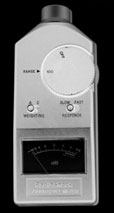
How Your Brain Understands What Your Ear Hears
10. Display a transparency made from Master 5.3, Answer Key to Loud,
Louder, and Loudest, and invite students to compare their rankings with those on the transparency. Invite students to share differences between their ranking and the ranking on the transparency. Discuss the possible reasons for these differences.
Answers will vary. For example, students may make different assumptions based on the distance from which the sound is heard.
Students will also display variation in their interpretation of terms (for example, differences in what people call a “quiet” neighborhood).
11. Make sure students notice the number that describes the difference in sound intensity between the loudest sound a healthy human ear can tolerate and the softest sound the human ear can hear. (The difference, 100 trillion times, appears in the footnote at the bottom of the answer key on Master 5.3.)
Students may be surprised to learn that the normal, undamaged human ear has such a wide range of hearing.
12. Ask students to estimate where on the table some of the sounds to which they are commonly exposed might fall. For example, ask them where the following sounds might appear on the table: the school cafeteria during lunch, the sound in the halls between periods, the sound in the classroom during a test, and the sound going into their ears when they’re listening to music using headphones.
As an option, you can task students with using an inexpensive sound meter to record actual sound levels in their environment. Sound meters can be purchased from some electronics stores for as little as $35. If you are going to use a decibel meter, remember to set it on the A setting. The A scale reduces the less harmful low-frequency sounds, emphasizing the higher-frequency sounds that are most harmful to hearing.
13. Ask students to speculate whether low- or high-pitched sounds are more likely to produce noise-induced hearing loss.
The hearing pathway is more sensitive to higher-pitched frequencies.
This means that high-pitched sounds can produce more damage at lower volumes than low-pitched sounds can. If necessary, remind students that in Lesson 3, Do You Hear What I Hear? , they demon-
Figure 5.3. An inexpen-
strated that higher-pitched sounds could be heard more easily at sive sound meter.
lower sound volumes.
118

14. Ask students if there are factors other than loudness and pitch that contribute to noise-induced hearing loss. If necessary, prompt them to consider the length of time for which they are exposed to sound.
On the board, write
• Single exposure to a very loud sound
• Repeated or long-term exposure to loud sound
• Extended exposure to moderate sound levels
15. Ask students to offer examples of sounds and exposure lengths that might produce noise-induced hearing loss for each category listed on the board.
Students can refer to Master 5.3, Answer Key to Loud, Louder, and Loudest, to help them think of examples. Help students recognize that the noises that have the highest potential for noise-induced hearing loss are listed toward the top of Master 5.3. Ask students to distinguish situations in which even a single exposure would likely produce noise-induced hearing loss, situations in which repeated or long-term exposure might produce noise-induced hearing loss, and situations in which constant exposure may lead to noise-induced hearing loss.
16. Display a transparency of Master 5.4, Dangerous Sound Levels, and point out the various decibel levels and exposure times that scientists consider to be hazardous. Ask students to describe the differences between their assessments and the assessments of the scientists.
17. Ask the class to think of ways to lower the risk for noise-induced hearing loss.
Students will suggest using some type of ear protection such as earplugs. They also may suggest reducing the noise level either by turning the volume down or moving farther away from the noise Content Standard F:
source.
The potential for acci-
dents and the exis-
tence of hazards
Activity 2: Assessing Risk for Hearing Loss
imposes the need for
injury prevention.
1. Explain to the class that they will evaluate the risk for noise-induced hearing loss in fictitious individuals. Distribute 1 copy of Master 5.5, Some Everyday Sounds, to each student and explain that it lists loudness levels for some everyday sounds.
119
Student Lesson 5

How Your Brain Understands What Your Ear Hears
2. Organize students into teams of four. Provide each team with 1
copy of Masters 5.6, 5.7, 5.8, and 5.9, which contain sound diaries summarizing the sound exposure for different fictitious individuals. Instruct team members to individually pick a different person and analyze the sound diary for that individual.
Explain that:
• Each team should use the information on Master 5.4, Dangerous Sound Levels (from the previous activity); Master 5.5, Some Everyday Sounds; and the information about their fictitious individuals to fill in the columns labeled “Estimated dB level” and “Suggestions for lowering risk of hearing loss.”
• Some of the activities that appear in the individual’s sound diary are not specifically listed in Master 5.5, Some Everyday Sounds.
Therefore, instruct students to make estimates about the loudness of unlisted sounds where necessary. They can use the column labeled “Comments” to indicate reasons for their choice of a particular dB level.
• After students have finished their analysis, they can exchange their summaries, discuss their reasoning with each other, and modify the summaries as needed.
• After the sound-diary summaries are completed, distribute copies of Master 5.10, Hearing-Risk Evaluation Form. Teams should place Content Standard F:
a checkmark next to the risk statement that they believe charac-Students should
terizes each of their fictitious individuals. Students should also understand the risks
justify their evaluations based on the information found in the sound diaries.
associated with per-
sonal hazards.
3. After teams have completed their evaluations, convene the class and invite teams to discuss their work.
Content Standard F:
Important personal
Although different teams may associate different dB levels with var-and social decisions
ious activities, their evaluations should be similar. All four of the are made based on
fictitious individuals are at risk for hearing loss for the following reasons:
the perception of ben-
efits and risks.
120

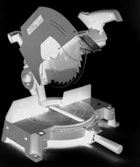
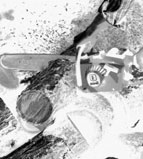
Joe, the guitarist: Joe is exposed to sound
levels above 80 dB on a constant and pro-
longed basis. His exposure to loud sounds
is primarily through his occupation as a
musician. Using earplugs would eliminate
his risk for noise-induced hearing loss.
His long freeway commute and his fre-
quent pit stops for food may also provide
constant exposure to sounds in the
higher-risk range. When listening to
music or watching TV, Joe should set the
sound volume to an appropriately low
level.
Figure 5.4. Joe’s guitar.
Maria, the woodworker: Maria is
exposed to sound levels above 80 dB on a
constant and prolonged basis. Her expo-
sure to loud noise is primarily through
her occupational use of power tools.
Using earplugs would eliminate her risk
for noise-induced hearing loss. Also of
concern is her use of a personal stereo for
listening to music. She should ensure that
the volume is kept at an appropriately
low setting.
Figure 5.5. Maria’s power saw.
Michael, the landscaper: Michael also is
exposed to sound levels above 80 dB on
a constant and prolonged basis. His
exposure to loud sounds is principally
through his occupational use of lawn
mowers and a chain saw. Using earplugs
would eliminate his risk for noise-
induced hearing loss. While at home, he
should keep the TV sound volume at an
appropriately low level. Students might
remark about his exposure to loud noise
from the occasional screaming of his
two-year-old twins. Sometimes there are
Figure 5.6. Michael’s chain saw.
sounds that you just have to cope with.
121
Student Lesson 5


How Your Brain Understands What Your Ear Hears
George, the firefighter:
George is exposed to
sound levels above 80 dB
on a constant and pro-
longed basis. His expo-
sure to loud noise is
primarily through his
occupational use of a
farm tractor and his con-
tact with sirens and other
loud noises in his role as
a firefighter. Using
earplugs would eliminate
his risk for noise-induced
Figure 5.7. George’s tractor.
hearing loss. His remodel-
ing work involves the use of power tools. Earplugs should be used to eliminate exposure to hazardous sound from these sources as well. When listening to music or watching TV, the sound volume should be set at an appropriately low level.
Activity 3: Sound Advice
1. Close the lesson by asking students to consider the implications of what they have learned on their own lives. Ask them to identify Content Standard A:
sounds that they are exposed to that might be classified as “too Students should
loud.”
develop descriptions,
explanations, predic-
2. Ask students to consider sounds they might be exposed to on tions, and models
weekends and during vacation periods. Are there any sounds that using evidence.
might be considered too loud or potentially hazardous?
3. To help students think about how to protect themselves, you may wish to draw their attention to the title of the lesson. Write the phrase Too Loud, Too Close, Too Long on the board. Ask the class to explain how it relates to noise-induced hearing loss.
4. As a means of wrapping up this module, ask each student to write a statement to include the following:
a. sounds they are exposed to that might put them at risk for noise-induced hearing loss and why they think those sounds put them at risk, and
b. advice to themselves about what they can do to reduce their risk for hearing loss.
122

Possibilities include limiting the volume on radios, TVs, and personal music players; avoiding loud noises from tools, appliances, and traffic; increasing distance from the source of loud n


















